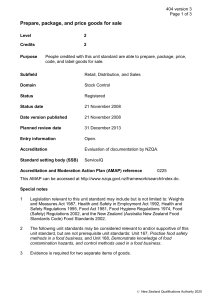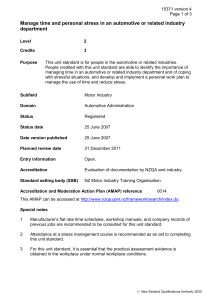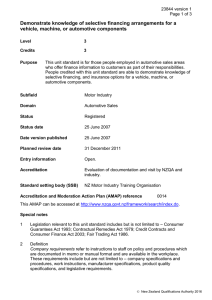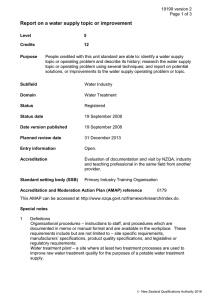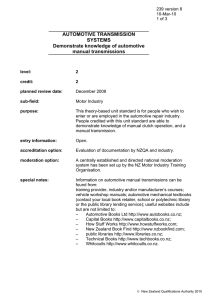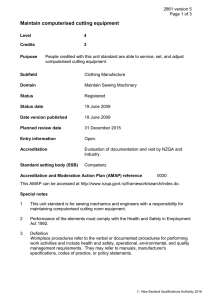Demonstrate knowledge of automotive oscilloscope patterns and
advertisement
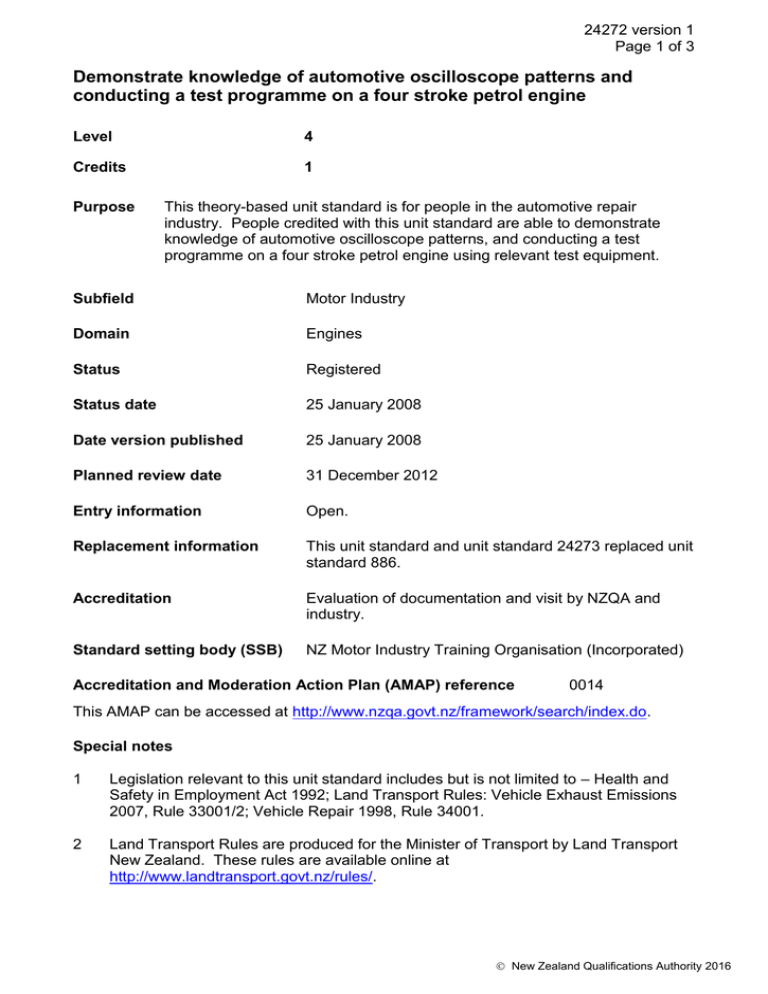
24272 version 1 Page 1 of 3 Demonstrate knowledge of automotive oscilloscope patterns and conducting a test programme on a four stroke petrol engine Level 4 Credits 1 Purpose This theory-based unit standard is for people in the automotive repair industry. People credited with this unit standard are able to demonstrate knowledge of automotive oscilloscope patterns, and conducting a test programme on a four stroke petrol engine using relevant test equipment. Subfield Motor Industry Domain Engines Status Registered Status date 25 January 2008 Date version published 25 January 2008 Planned review date 31 December 2012 Entry information Open. Replacement information This unit standard and unit standard 24273 replaced unit standard 886. Accreditation Evaluation of documentation and visit by NZQA and industry. Standard setting body (SSB) NZ Motor Industry Training Organisation (Incorporated) Accreditation and Moderation Action Plan (AMAP) reference 0014 This AMAP can be accessed at http://www.nzqa.govt.nz/framework/search/index.do. Special notes 1 Legislation relevant to this unit standard includes but is not limited to – Health and Safety in Employment Act 1992; Land Transport Rules: Vehicle Exhaust Emissions 2007, Rule 33001/2; Vehicle Repair 1998, Rule 34001. 2 Land Transport Rules are produced for the Minister of Transport by Land Transport New Zealand. These rules are available online at http://www.landtransport.govt.nz/rules/. New Zealand Qualifications Authority 2016 24272 version 1 Page 2 of 3 3 Definition Relevant test equipment may include stand-alone systems, vehicle manufacturer diagnostic tools, scan tools, analysers, digital storage equipment, and computerbased equipment. Elements and performance criteria Element 1 Demonstrate knowledge of automotive oscilloscope patterns. Performance criteria 1.1 Normal ignition oscilloscope patterns are identified and their phases are explained in accordance with equipment manufacturer manuals. Range 1.2 primary and secondary patterns. The different types of display and their functions are described in accordance with equipment manufacturer manuals. Range superimposed, raster, parade, compare. Element 2 Demonstrate knowledge of conducting a test programme on a four stroke petrol engine using relevant test equipment. Performance criteria 2.1 Procedures for connecting relevant test equipment to a vehicle are described in accordance with equipment manufacturer instructions. 2.2 Procedures for testing an engine using relevant test equipment are described in accordance with equipment manufacturer instructions. Range includes but is not limited to – cranking and starter tests, battery capacity, charging, primary and secondary patterns, ignition timing, cylinder balance, idle speed, exhaust emissions, recording results. Please note Providers must be accredited by NZQA, or an inter-institutional body with delegated authority for quality assurance, before they can report credits from assessment against unit standards or deliver courses of study leading to that assessment. Industry Training Organisations must be accredited by NZQA before they can register credits from assessment against unit standards. Accredited providers and Industry Training Organisations assessing against unit standards must engage with the moderation system that applies to those standards. New Zealand Qualifications Authority 2016 24272 version 1 Page 3 of 3 Accreditation requirements and an outline of the moderation system that applies to this standard are outlined in the Accreditation and Moderation Action Plan (AMAP). The AMAP also includes useful information about special requirements for organisations wishing to develop education and training programmes, such as minimum qualifications for tutors and assessors, and special resource requirements. Comments on this unit standard Please contact the NZ Motor Industry Training Organisation (Incorporated) info@mito.org.nz if you wish to suggest changes to the content of this unit standard. New Zealand Qualifications Authority 2016

